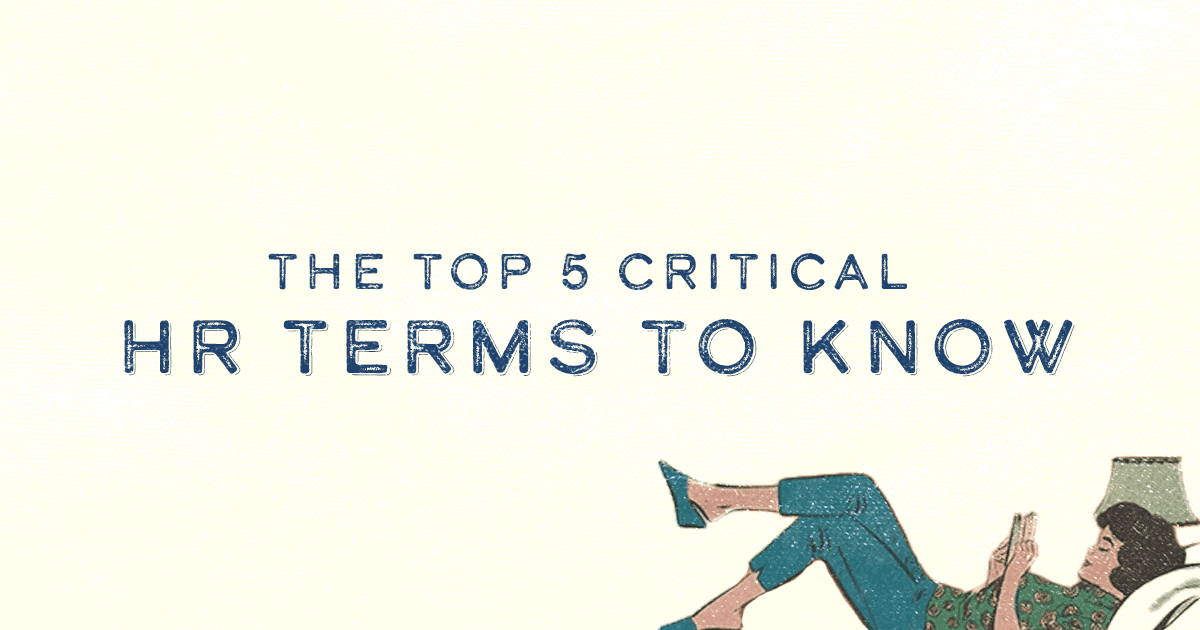
HCM and HR possess a self-reflective love of acronyms. From technical terms like ATS to Department of Labor terms like ADA, it's a confusing alphabet to navigate.
The good news? They're much scarier than they look. But they're vital for you to know a business owner.
Why? Because they concern your employees. And without a team of people working for you, you wouldn't have a business. Investing in your team's safety and well-being will garner you the highest return on investment.
According to Metlife, 51% of employers say that using benefits to retain employees will become even more important in the next 3 to 5 years.
Practically speaking, understanding what these terms mean will prevent you from potential legal blindspots in the future. It will also help you be a better business owner by knowing how these acts affect you, your team, and your business.
In this article, we're going to review the following five HR terms that you need to know: FLSA, FMLA, ACA, COBRA, OSHA.
1. The Fair Labor Standards Act (FLSA)
The Fair Labor Standards Act (FLSA) establishes minimum wage, overtime pay, recordkeeping, and youth employment standards affecting employees in the private sector and in Federal, State, and local governments.
What this means for you:
- You need to have an FLSA Minimum Wage Poster in your office
- If you willfully violate this, it can result in a criminal prosecution of $10,000. A second offense may result in imprisonment.
2. Family and Medical Leave Act (FMLA)
The Family and Medical Leave Act (FMLA) entitles eligible employees to take unpaid, job-protected leave for specified family and medical reasons with the continuation of group health insurance coverage under the same terms and conditions.
What this means for you:
As an employer, it's important that you know what eligible employees are entitled to under the FMLA. You must provide twelve workweeks of leave in a 12-month period for the following:
- Childbirth and newborn care
- Adoption and foster care
- Care for a sick spouse, child, or parent
- Serious health conditions
- Demands of a military spouse or family member being active duty
Or twenty-six workweeks of leave during a single 12-month period for a military spouse or family member to care for a covered servicemember with a serious injury or illness.
Read more about FMLA here.
3. Affordable Care Act (ACA)
The Affordable Care Act (ACA) was enacted in 2010 under the Obama administration. This act makes affordable healthcare available to more people. It has three primary purposes:
- It makes healthcare affordable for more people.
- It expands Medicaid to cover adults within 138% of the federal poverty level
- It supports innovative medical care delivery.
What this means for you:
Full-time employee determination is one of the most important tasks for an employer – directly because of the Affordable Care Act.
As an employer, you must closely track the hours of employees whose hours vary. The key issue for business owners is whether they will be considered an applicable large employer who employs an average of at least 50 full-time employees during the preceding calendar year.
Full-time employees are defined as averaging 30 hours/week or 130/hours a month. Full-time equivalents that average 120 hours/month are included in the count for ACA purposes.
If you fail to offer benefits, you run the risk of no-coverage penalties.
4. Consolidated Omnibus Budget Reconciliation Act (COBRA)
The COBRA law is now 30 years old, but many employers still don't understand what it means, or everything that it requires them to do. As compliance requirements change and grow, it's easy to overlook this important law.
COBRA is the continuation of health coverage for an employee and his or her family after they are let go or fired. They have the right to choose to continue group health benefits for a limited period of time.
What this means for you:
If you have twenty or more employees, then you are covered by COBRA. As a business owner, you need to familiarize yourself with this law, which benefits and employees are covered, when it applies, and the administrative tasks that accompany it.
5. Occupational Safety and Health Act (OSHA)
Perhaps the most familiar out of all acronyms, OSHA ensures you and your employees' safety. On December 29, 1970, President Nixon signed the Occupational Safety and Health Act into law.
OSHA has improved workplace safety in the private and public sectors, reducing workplace fatalities by almost 63 percent.
It does not cover the self-employed, immediate family members of farm employers, and workplace hazards regulated by another federal agency (such as Mine Safety and Health Administration).
What this means for you:
Employers must follow the OSH Act to protect their employees and consistently find ways to create a safer work environment. You are required to display the official OSHA "Job Safety and Health - It's the Law" poster at work. It's free and can be downloaded from www.osha.gov.
Your workers have the right to file a confidential complaint to OSHA, receive copies of work-related injuries and illnesses that occur in their workplace, and even participate in an OSHA inspection.
We've only skimmed the surface of the OSH Act, so download and read All About OSHA.
What's best for your employees, is best for your business.
Business owners need to understand HR terminology in order to stay up-to-date on changing regulations, avoid complicated penalties and fines, and be a great leader to their employees.
How can you support your HR system, reduce administrative tasks, and get back to developing your team? Read this article on the three ways HCM can benefit human resources.
Topics: